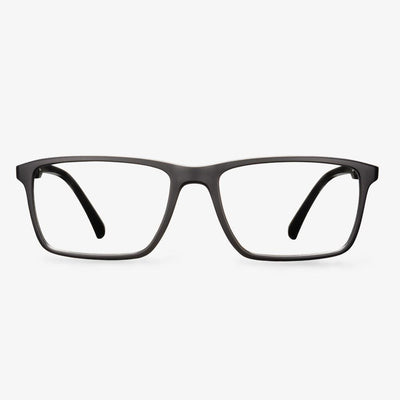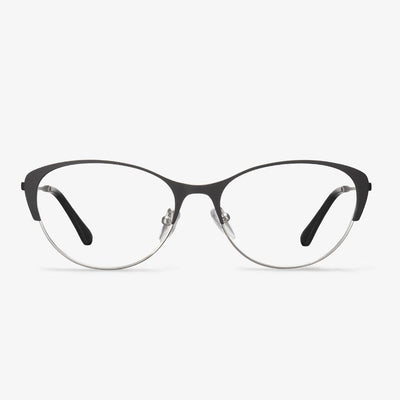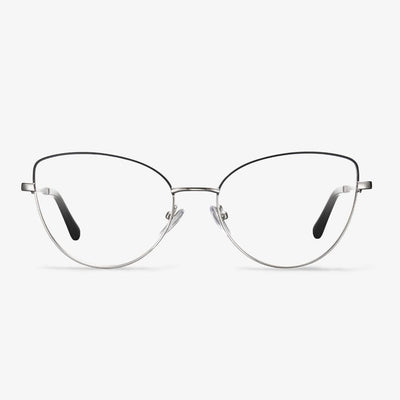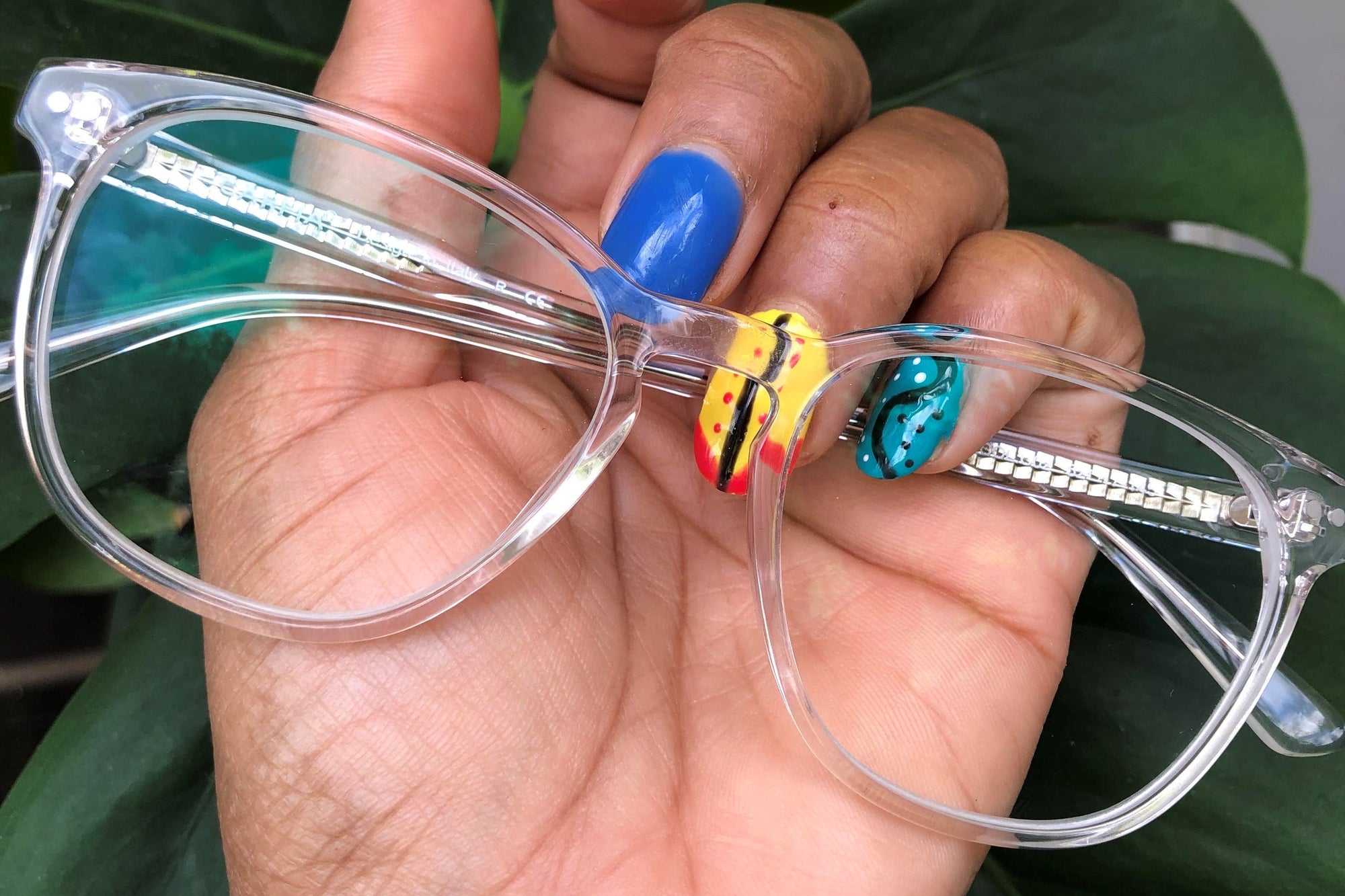Pay attention to the frame
The frame stability is good, in line with the shape of the customer's face. Usually, you should not choose a rimless frame with easy deformation, to ensure that the curvature of the front surface of the frame and the wearer's forehead arc is consistent. The frame must have enough vertical height, which can be selected according to the type of lens selected, otherwise, it is easy to cut off the near or far part when cutting the edge.Adjust the front angle of the frame based on the facial features of the wearer to match the frame with the face, which helps to maintain enough gradient field of vision.
Are night driving glasses good?
The color of night driving glasses can be selected from yellow to amber. Yellow lenses will reduce the light entering the eyes and reduce visibility. At night, this can be harmful. The lens filters out a lot of glare, but also filters out other visible light, making it difficult to see objects in dim or dark conditions.
Some people who wear night driving glasses say that they are more capable of seeing things at night. However, related test studies have shown that driving glasses at night does not improve night vision, nor can it help drivers see pedestrians faster than when they are not wearing glasses. A small study in 2019 showed that night driving glasses actually slow down the visual reflex by a fraction of a second, making night vision worse. So don't try to improve the safety of driving at night by wearing driving glasses with this kind of yellow lenses.
Does wearing sunglasses at night help driving? Like night driving glasses, sunglasses will reduce the amount of light entering the eyes, which makes them unsuitable for night driving and potentially dangerous.
Choose blue light glasses with better quality lenses and frames.
Pay attention to the choice of true color lenses.0-12-year-old children are in the critical period of growth, and the color and things are in the cognitive stage. Blue light-blocking glasses should restore the true color as far as possible, with no blur. And it will not have a color difference. Pay attention to the strength of blue-light-blocking glasses. Choose a strong and flexible frame.
How to Perform Glasses Measurements?
If there is no number on the temple of eyeglasses, you can perform glasses measurements by yourself. Now, we will show how to do that.
To measure the glasses’ size, you need to prepare a ruler or a tape first. To measure the frame width, measure the entire horizontal front of the frame, from the furthest extended point on either side. As for lens height, you should measure the vertical height of the lens. As for the bridge, you should measure the part that goes across the bridge of your nose. The temple arms include the front of the frame on either side and the rest behind your ear. The lens width is the horizontal diameter of one lens. So, when measuring these, you should be careful.
After that, you have measured the glasses frame size. If you want to know whether your face is right for this frame, you can read the post: How to Measure Face for Glasses Frames - 7 Steps
If you need a pair of new glasses, you can try Koalaeye glasses. They are stylish and cheap and they are lots of available choices.
Glasses Size - Frame Width
To really know how big a frame is, and how it will look on your face, you have to determine the width of the entire frame. The outer width of the frame is the distance between the visible areas on the left and right sides of the frame, namely, the distance between the frame and the junction of the two temples. The inner width of the frame is the distance between the inner sides of the two temples at 60mm behind the plane of the lens. This is just the contact point between the temple and the human temple. If it is too tight or too loose, it will affect the wearing comfort. The weight of the frame is evenly distributed across the bridge of the nose (or evenly distributed between the two nose pads on the bridge of the nose).
Basic principles of progressive lenses
The surface of the progressive slice is divided into five regions. There are far, middle, and near optical areas. They are respectively corresponding to see distant objects, middle distance objects in the near distance objects. One pair of glasses is multi-purpose. In appearance, it is not very different from regular lenses. There is no clear dividing line. Distal use area: The area above the progressive slice is the distal use area, which is used to correct the distal refractive error. Proximity area: from the matching lens cross down, the refractive power of the lens continuously increases the positive degree, which is used to see close objects. Gradient area: The channel connecting the far and near areas. It is an area of regular change from top to bottom, used for transitioning and seeing objects at intermediate distances. The length of the gradient is very important for the wearer's adaptation. The rate at which the degree of gradient changes is called gradient. The gradient can be uniform or variable. Peripheral area: Changes in the surface curvature of the lens will lead to aberrations in the peripheral areas on both sides of the lens, mainly astigmatism and prism effect, which will interfere with a vision to a certain extent, resulting in blurred vision or distortion. And it will affect the wearer's adaptation to the progressive lens.
Study On the Night Driving Glasses
Researchers at Harvard's Schepens Eye Research Institute recently conducted a study to find out if wearing night driving glasses while driving at night is good for vision. All 22 participants drove under four conditions that simulated night driving, wearing either yellow night driving glasses or glasses with clear lenses. Each participant drove with or without the headlight glare simulator activated to simulate the effect of oncoming traffic. The study found that wearing glasses while driving at night didn't seem to improve: how well the participants were able to recognize pedestrians at night and negative effects of headlight glare on pedestrian detection. Our data suggest that wearing yellow lenses while driving at night does not improve performance at the most critical task: pedestrian detection, the study's authors said. A small 2019 study showed that night driving glasses can actually slow down visual reflection by a fraction of a second, making night vision worse.


































